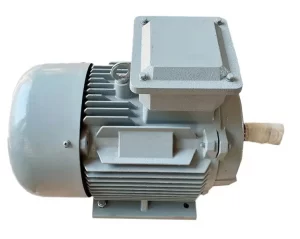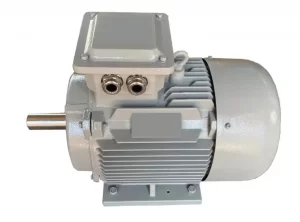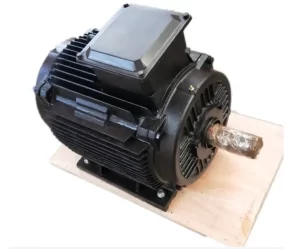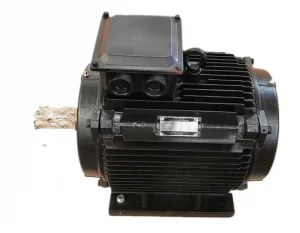
Over the years, various critical innovations in marine energy solutions have contributed to technology maturation. Steam and internal combustion engines were the workhorses of early power systems, with transformative capacity but serious operational limitations. These early systems were highly inefficient and often burned massive amounts of fuel in the process, requiring extensive maintenance. With an increasing need for more efficient and sustainable energy, a range of new technologies started to develop that directly competed with conventional marine propulsion systems’ capabilities.
Permanent magnet generator technology is emerging as a key advancement along the marine energy pathway. They have been designed with high-energy density magnets to improve energy efficiency and lower the cost of operation. With this reduced energy loss capability, permanent magnet generators are ideally suited for marine applications where efficiency and reliability are a top priority. The technology has been trending among companies like Qingdao Enneng Motor Co., Ltd providing tailor-cut solutions for different specialized marine applications, such as offshore platforms, mobile stations and so on.

The most important benefit of permanent magnet generator technology is that it reduces a huge amount of fuel use. They also generate at very high efficiencies, meaning that every kilowatt the generator provides consumes less fuel than conventional systems. Research suggests that ships fitted with permanent magnet systems can see annual fuel savings greater than 3% or beyond when compared to legacy propulsion technologies. With the rates of fuel rising together with tighter regulations against emissions, a permanent magnet generator becomes indeed economical to operate as well for ship operators.
Permanent magnet generators also allow for reducing maintenance costs along with supporting a reduction in fuel consumption. This design removes a lot of mechanical components typically used in conventional generators such as exciters and gearboxes that are common sources of mechanical failure. As such, it requires less maintenance, and equipment lasts longer. Through the strategic use of finite element analysis as a design tool, these generators are built with strong structures that can deliver performance characteristics without requiring too many service intervals. This, of course, results in reduced downtime and a more predictable operational budget for operators.
Permanent magnet generator technology provides a quieter, more efficient operation especially useful in a marine environment. These generators improve the performance of marine systems, as they offer high torque at low speeds and keep working efficiently over a wide range of load/speed characteristics. They are intended to handle varying loads, ensuring consistent power output during changing operational conditions – e.g. dynamic positioning. This ability is essential for vessels, including research ships and offshore supply vessels, that need to maneuver accurately.
Permanent magnet generators are extremely scalable, thus they can fit onto various sizes & applications of vessels. Moderate output power requirements in recreational watercraft to larger commercial vessels and cargo ships can all be tuned appropriately for these systems, with expected performance not significantly degraded. At the same time, manufacturers including Qingdao Enneng Motor Co., Ltd. can adjust specifications according to special customer requirements because customization is the basic nature of the technology itself. The versatility that comes with permanent magnet generator technology bodes well for its application in a high number of tasks required by the marine industry, whether it is for auxiliary power units or main propulsion systems.
Permanent magnet generator technology is improving marine efficiency and providing a noticeable route to both eco-friendly and financial savings. The need for advanced technologies will only grow as the industry matures and adapts to dynamic regulations and changing market triggers. This change is reflected in the transition from legacy power systems to future-ready solutions and may lend itself to new developments where eco-friendly, efficient, and reliable solutions are enabled for maritime operations.
This is one of the cornerstones of permanent magnet generator technology, which significantly lowers greenhouse gas production tied to marine operations. With the aid of high-efficiency generators, this ensures that vessels can reduce their carbon footprint to a considerable extent. The idea is simply that for every gallon of fuel burned to power an internal combustion car, one gets more useful work—more acceleration, more speed, etc.—and this translates into lower use of fuel leading to lower emission at the tailpipe both in terms of carbon dioxide (CO2) and other harmful pollutants from the inefficient process. By using less fuel, and being able to tow more efficiently at lower speeds and different loads you can get toward a more sustainable industry that is moving in the direction of meeting global emission reduction targets.
Moreover, the combination of these modernized systems enables owners to comply with rapidly accelerating international rules on shipping emissions, especially those set by the International Maritime Organisation (IMO). With the growing emphasis on environmental sustainability, shipping companies are finding new ways to operate efficiently and responsibly to protect marine environments. PM generators not only meet all these demands but also enhance the paradigm shift towards cleaner ship operations resulting in local as well as global substantial environmental advances.
Adopting PM generator technology to support the industry-wide goal of sustainable shipping practices in the marine sector. These generators are well designed with an emphasis on the usage of generated renewable energy and can extract wind, tides, etc. With the inclusion of renewable dielectrics into marine basic energy systems, vessel operation may be assisted not only by traditional fossil fuel-based power generation but also by green alternatives.
Additionally, the small size and light weight of permanent magnet generators allow for even more flexibility in ship systems design and configuration. This intrinsic flexibility allows vessels to utilize renewable energy sources while maintaining operational performance. Consequently, companies will be able to begin retrofitting their current fleets with more environmentally friendly technologies – subsequently enhancing sustainability. The marine industry is trying to move ahead and adopt new standards, so the introduction of permanent magnet generator technology represents a key milestone in the implementation of green shipping.
Top players in the maritime space understand the opportunity permanent magnet generator technology offers and are seeking to adopt cutting-edge solutions that boost marine energy efficiencies. With a lot of R&D, they have now made marine power systems more efficient and reliable. Encompassing things like modular systems that can fit into current infrastructure for simpler upgrades and setup.
They include automation and digitalization of marine operations, such as constant monitoring and real-time data feedback for performance or efficiency improvements in permanent magnet generators. With the help of digital tools, companies can actively adapt operational parameters to fluctuations in demand and at the same time minimize energy consumption. Innovation is key to remaining competitive within the industry while acting responsibly both sustainably and environmentally.
Qingdao Enneng Motor Co., Ltd. is among the leading players in the early-stage marine application of permanent magnet generator technologies. Drawing on its experience in three-phase synchronous generator design for all types of marine applications from power stations to offshore drilling platforms, the company has now developed and launched its own range of permanent magnet machines. Drawing on the best features of similar products at home and abroad, Qingdao Enneng has achieved customized solutions for its customers.
We offer generators designed for efficiency—utilizing features like high pole counts which reduce frequency and increase efficiency, vacuum pressure impregnation to improve insulation, as well as designs that maintain low starting torque. In addition, its generators can be run as single or in parallel configurations thus adding to their versatility. Through these innovations, Qingdao Enneng Motor developed the permanent magnet generator to be on par with authentic mega-level scale which is poised to lead sustainable marine energy development as well as facilitating wider applications of this technology by industry.
In Summary, technological advancements of permanent magnet generators integrated into marine energy technology provide significant environmental benefits and innovations from companies leading the way toward such efficiency. These advances in technology will change marine operations as they help with fuel consumption and emissions reduction, along with more sustainable methods of shipping. The improving technology conditions in the industry will hold a key role in facing energy requirements in the subsequent eras with sustainability.